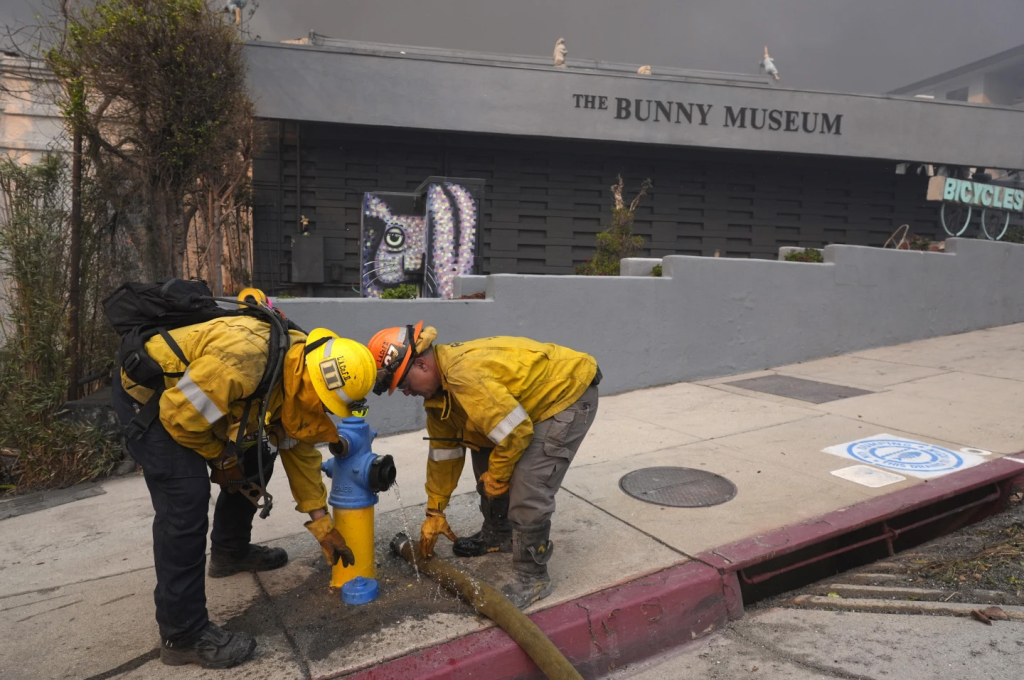
Photo Courtesy of AP
The water infrastructure in Los Angeles faced severe strain during the Palisades fire, which has become the most destructive blaze in the city’s history.
As firefighters battled the flames, some hydrants ran dry due to unprecedented demand, complicating efforts to contain the fire that consumed over 1,000 structures.
The Los Angeles Department of Water and Power (LADWP) attempted to supplement the water supply by drawing from aqueducts and groundwater. However, the demand was so overwhelming that it depleted three one-million-gallon tanks crucial for maintaining hydrant pressure in the hilly Pacific Palisades area. By early Wednesday morning, all tanks had run dry, leading to significant challenges for firefighting operations.
Criticism arose on social media regarding the management of water resources, with notable figures like President-elect Donald Trump questioning the policies of Los Angeles Mayor Karen Bass and Governor Gavin Newsom. In response, state and local officials defended their actions, asserting that the issues with hydrants were not linked to broader water distribution policies but rather to an extraordinary surge in demand.
Janisse Quiñones, CEO of LADWP, indicated that the water system was pushed to its limits, experiencing demand four times higher than usual for an extended period. She emphasized that hydrants are typically designed for smaller-scale fires rather than large-scale emergencies like the Palisades fire.
Mayor Bass noted that approximately 20% of hydrants in the area went dry.Experts pointed out that Los Angeles is not alone in facing such challenges; urban water systems nationwide are increasingly stressed by climate change-induced wildfires. The situation was exacerbated by high winds and smoke that grounded firefighting aircraft, further limiting available resources.
Rick Caruso, a local developer and former water commissioner, criticized city officials for not adequately addressing these systemic issues. He argued that improvements are necessary to ensure sufficient water supply during emergencies




